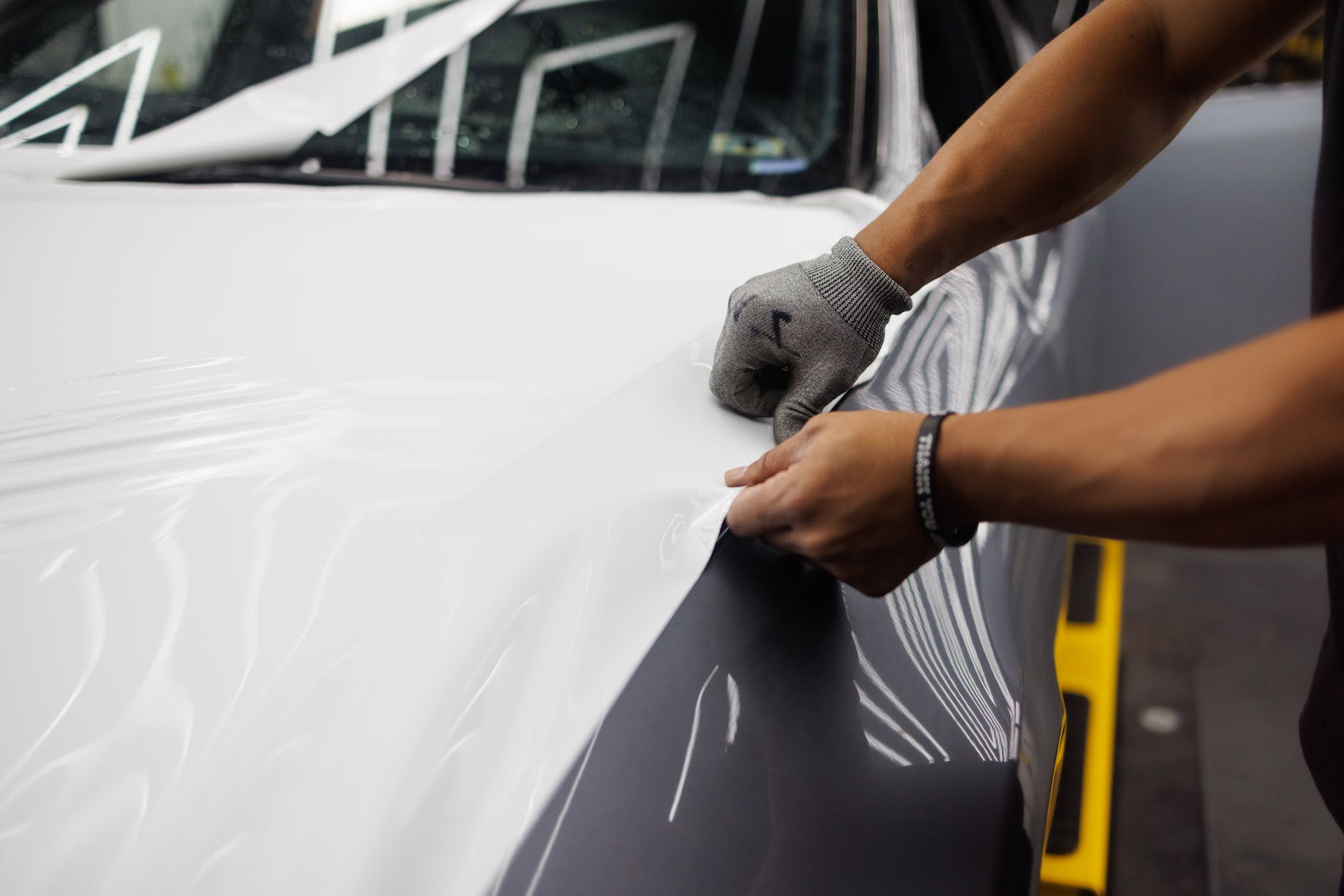
Table of contents
Introduction
When it comes to transforming the appearance of your car, two popular options stand out: car wrap or paint. Both methods offer unique advantages and drawbacks, catering to different preferences and needs. In this entry on the PowerShift Auto blog, we’ll delve into the pros and cons of each approach, helping you make an informed decision for your car customization project.
Conventional Paint
Painting a car has long been the traditional method of changing its color or finish. Auto body paint has become a craft in itself, with many designers creating unique and eye-catching colors. However, paint may not always be the right option for you. Here are some of the pros and cons with this approach:
Pros
- Durability: A high-quality paint job, especially with a clear coat, can provide excellent protection against UV rays, fading, and minor scratches. Also, a car’s paint can be easily restored with a high quality detailing job. Check out our beginner detailing guide if your paint needs a refresh!
- Customization: With paint, you have the freedom to choose from a vast array of colors, finishes, and effects, allowing for a truly personalized look. Also, if there is a specific color you love from a manufacturer, the shop can get it for you no problem!
- Resale Value: A professionally executed paint job can increase the resale value of your car, particularly if it’s done to a high standard. A poor paint job is easily spotted by a potential buyer so make sure you get the job done right!
Cons
- Cost: A professional paint job can be expensive, especially if you opt for premium materials, multiple layers, or complex designs. Metallic flake or other intricate paint jobs will raise the price significantly. Additionally, the cost of repainting or color changes in the future should also be considered.
- Time-Consuming: Painting a car requires meticulous preparation, including sanding, priming, and multiple coats of paint. The process can take several days or even weeks, depending on the extent of the project.
- Irreversibility: Once a car is painted, reverting to its original color or changing it again can be challenging and costly, requiring significant effort and expert skills.
With your vehicle’s paint comes necessary maintenance and cleaning. If you don’t know how to properly wash your car, read our basic car detailing guide for help!
Car Wrap
Car wrapping has gained popularity in recent years as a flexible alternative to traditional painting. These vinyl wrap designs can be as simple or as intricate as the mind of the owner. While their versatility is limitless, wrapping a car may not be your best option. Here’s an overview of its pros and cons:
Pros
- Cost-Effective: Vinyl wrapping is generally more affordable than painting, making it an attractive option for car owners on a budget. Additionally, the cost of removal and reapplication is relatively lower than repainting.
- Versatility: Vinyl wraps offer an extensive range of colors, finishes, textures, and patterns, allowing for a wide variety of creative possibilities. They can also mimic the appearance of expensive materials like carbon fiber or brushed metal. If you head over to our car wrap color article, you can check out some of my personal favorite options!
- Protection and Reversibility: Vinyl wraps provide a protective layer against minor scratches, chips, and UV damage. They also are removable, enabling you to revert to the original paint or change the wrap in the future.
Cons
- Longevity: While vinyl wraps can last several years, they are generally less durable than high-quality paint jobs. Harsh weather conditions, improper installation, or regular wear and tear may cause the wrap to deteriorate over time.
- Limited repairs: If a vinyl wrap sustains significant damage, it is often difficult to repair seamlessly. In such cases, the entire wrap may need to be replaced, incurring additional costs.
- Surface Preparation: Achieving a flawless car wrap requires a meticulously clean and smooth surface. Any imperfections, such as dents or deep scratches, may affect the final result.
Considerations For Car Wrap vs Paint
When debating on how to customize your car, you need to take a couple factors into consideration. Longevity may be a critical factor to you if you want to only do this job once. However, the versatility of a vinyl car wrap may be better suited for those who get bored of their car’s color easily. Maybe instead of a single color, you want a camouflage pattern or chrome!
Budget will most likely be your number one constriction in this area. When I had my Focus ST, I checked out Kuttek Works and got a quote for a single color vinyl car wrap. For the options I was looking at back in 2020, the cost was around $3000 with labor. Fast forward to today, I have the desire to change the color of my 1966 Chevelle. A quality paint job done by a reputable shop is going to cost twice as much, if not more. While I want to make the Chevelle fit my all black colored car fleet, I don’t want it to fit in that bad yet.
Lastly, the amount of time you’re willing to wait is a factor. A properly done paint job on a car will take time. A reputable shop will make sure the body is as smooth as possible. This way they will ensure the paint will have the perfect surface to lay on. On the other hand, a car wrap will take less time since the prep work is not as extensive. A skilled installer can get the job done in hours and have you back on the road.
Go over the pros and cons we laid out for you and consider what is best for you!
Conclusion
Choosing between painting and car wrap ultimately depends on your preferences, budget, and long-term goals for your car’s appearance. Painting offers durability, customization, and potential resale value but can be costly and time-consuming. On the other hand, car wraps provide affordability, versatility, and reversible modifications, but may have limitations in terms of longevity and durability. Assessing the pros and cons of each method will help you make an informed decision that aligns with your vision for your vehicle. As always, we recommend you consult professionals in this space for the best aesthetic outcome.

Keep up with the latest articles, content, and special offerings by signing up for our email newsletter!
